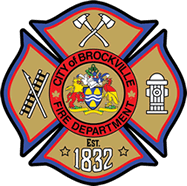Smoke Alarms
Smoke alarms save lives. Three out of five fire deaths happen in homes with either no smoke alarms or no working smoke alarms. When there is a fire, smoke spreads fast – smoke alarms give you time to get out.
SMOKE ALARM FACTS
It’s the law.
The Ontario Fire Code requires that every home have working smoke alarms on every level. If you are a landlord it is your responsibility to comply with this law. If you are a tenant it is your responsibility to notify your landlord immediately if your alarm/s is/are not working.
Smoke alarms save lives.
Most fatal fires occur at night when people are asleep. Often, victims never wake up. A working smoke alarm will detect smoke and sound an alarm to alert you, giving you precious time to escape.
One smoke alarm is not enough.
Install smoke alarms on every level of your home and near sleeping areas. If you or your loved ones sleep with bedroom doors closed, install an alarm inside each bedroom.
Smoke alarms don’t last forever.
Smoke alarms do wear out, so if you think your alarms are more than 10 years old, replace them with new ones. Please note you cannot replace a hard-wired smoke alarm with a battery-powered smoke alarm.
TYPES OF SMOKE ALARMS
There are many types of smoke alarms, each with different features. Alarms can be electrically connected, battery-powered or a combination of both. Smoke alarms commonly use one of two types of technology to detect the presence of smoke in the air: Photoelectric smoke alarms and Ionization smoke alarms.
Ionization smoke alarms are generally more responsive to flaming fires.
How they work: Ionization-type smoke alarms have a small amount of radioactive material between two electrically charged plates, which ionizes the air and causes current to flow between the plates. When smoke enters the chamber, it disrupts the flow of ions, thus reducing the flow of current and activating the alarm
Photoelectric smoke alarms are generally more responsive to fires that begin with a long period of smoldering (called “smoldering fires”).
How they work: Photoelectric-type alarms aim a light source into a sensing chamber at an angle away from the sensor. Smoke enters the chamber, reflecting light onto the light sensor; triggering the alarm.
For each type of smoke alarm, the advantage it provides may be critical to life safety in some fire situations. Home fatal fires, day or night, include a large number of smoldering fires and a large number of flaming fires. You can not predict the type of fire you may have in your home or when it will occur. Any smoke alarm technology, to be acceptable, must perform acceptably for both types of fires in order to provide early warning of fire at all times of the day or night and whether you are asleep or awake.
For best protection, it is recommended both (ionization and photoelectric) technologies be used in homes. In addition to individual ionization and photoelectric alarms, combination alarms that include both technologies in a single device are available.
SMOKE ALARM MAINTENANCE
Only working smoke alarms can save your life! Smoke alarms require simple maintenance to keep them in good working order. These tips will help to make sure your alarms perform as intended-when you need them the most:
- Test your smoke alarm regularly.
Once a month, test your smoke alarms by pushing the alarm test button. - Change your clock, change your battery.
Install a new battery of the proper type at least once a year. If the low battery warning beeps, replace the battery immediately. We change our clocks each spring and fall so this is a good time to change your batteries as well. - Gently vacuum alarm every six months.
Dust can clog a smoke alarm, so carefully vacuum the inside of a battery powered unit using the soft bristle brush. If electrically connected, vacuum the outside vents only. - Replace older smoke alarms.
All smoke alarms wear out. If your alarms are more than 10 years old, replace them with new ones.

